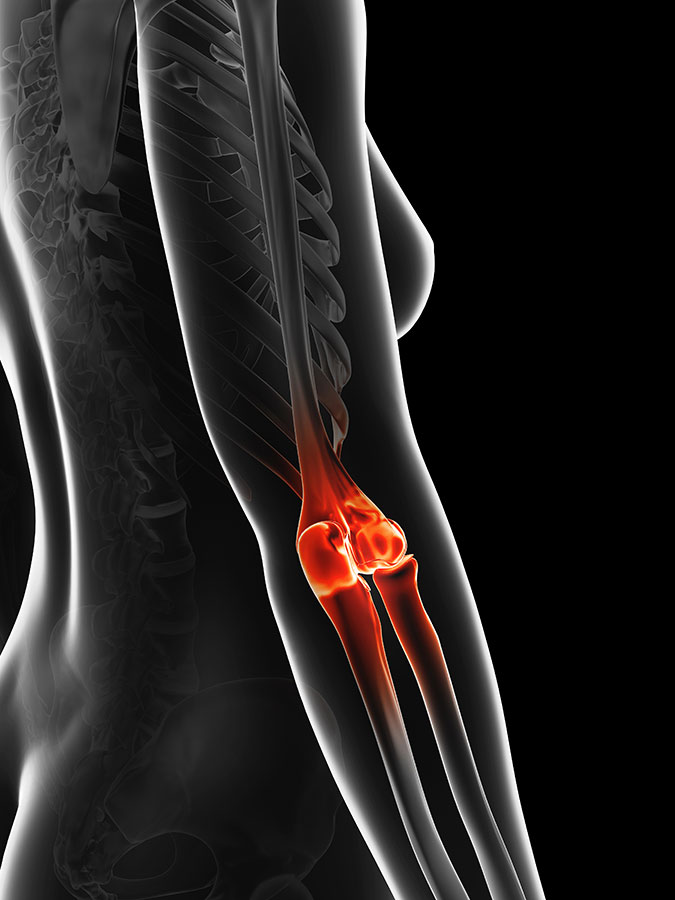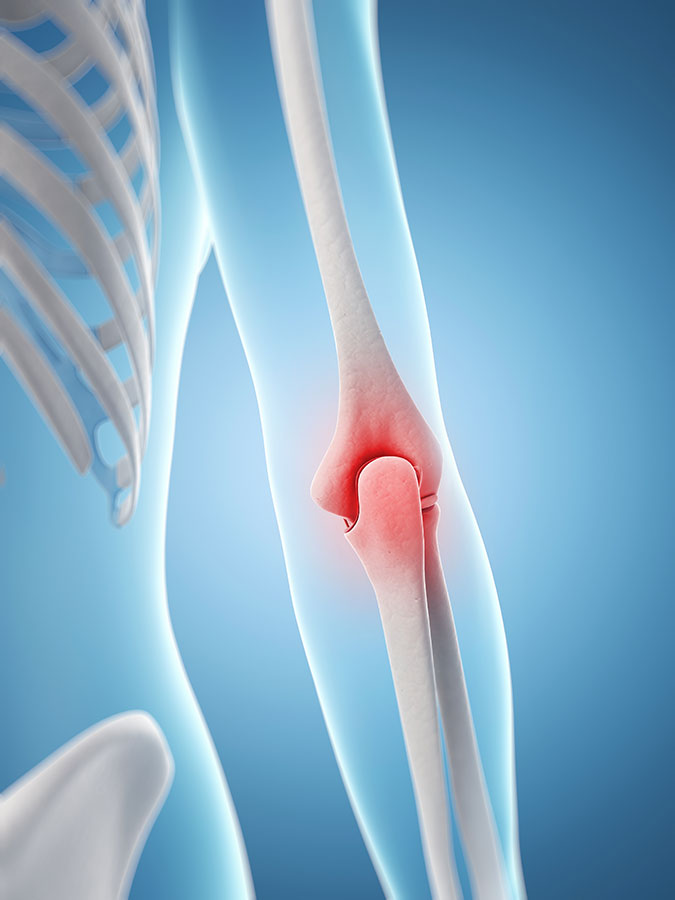The most common elbow injuries are well known – normally referred to as tennis elbow and golfer’s elbow, the correct medical terms are lateral epicondylitis and medial epicondylitis respectively.
The terms tennis and golf are not the definite causes of injury; they are a generic term applied to a set of symptoms usually experienced on either the inside, or outside of the elbow. Though it is common in those that play racket sports and golf, it can be experienced by many athletes whose sport involves any significant gripping/grasping of an object.
Identifying and addressing the root of the problem is the key to its resolution. In some instances practitioners like to simply inject the injury and carry on. However, this does not address the underlying cause and can just be a temporary fix. A complete treatment solution, addressing all aspects of the injury gives the best possible chance of success, injections do have their place, but as part of a more detailed management strategy.

Causes of elbow pain
Whether it be direct trauma to the elbow or repetitive strain on the structures in the elbow joint. We are able to assess where the pain is coming from. The elbow has 3 joints which connect the forearm with the upper arm. Pain coming from inside the joint during movement could be due to injury of these joint connections.
Muscles like the biceps ends in the elbow and many body builders have torn this muscle. The triceps muscle also ends in the back part of the elbow and its tendon is usually the corporate at producing a pain that limits you from bending the elbow.
Nerve injury or compression that causes the forearm to become numb (in the ring and pinkie fingers) can be from the Ulnar nerve. The discomfort can be treated by neural mobilizations to release the nerve compression.
Our professional experience with elbow pain
Elbow injury leaves our patients unable to use their hands and shoulder. Our goal is to restore the movement of the elbow joint as soon as possible to prevent stiffness (which causes much bigger problems). We have found dry needling and strapping are very effective in patients suffering from tennis and golfer’s elbow. We provide the correct guidance that needs to be done so the injury can heal.

Symptoms of elbow injury
Mild symptoms
- Pain with wrist movement
- Gripping causes pain
- Lifting/carrying is painful
- Pain turning door knobs; pouring kettles; opening jars & bottles
- Tenderness when pressing on elbow
- More stiffness in the morning
- Pain that eases with activity
Moderate symptoms
- Unable to bend or straighten your elbow
- (Locking of your elbow)
- Burning pain even when not moving
- Pain radiating down the forearm
- Sharp pain when gripping
- Stiffness restricts normal movement
- Sharp pain when moving against resistance
Types of elbow pain & structures they may relate to:
Muscle pain in elbow
- Pain gets worse during activity
- Burning or cramp like pain
- Stiffness and tightness
- Dull pain when stretched
- Pain only at the end of range
- No loss of muscle strength
- Able to move your wrist through the full range of movement
- Little swelling
Joint pain in elbow
- Sharp sudden pain
- Worse when moving as compared to static positions
- Pain when doing a specific moment
- Muscle tightness surrounding sharp pain
- Deep pulling feeling when stretched/ moved
- With or without swelling
- Pinching feeling at end of range
- Unable to pinpoint it to one specific spot
- Dull ache over a large area
- Unable to find a pain-free position

